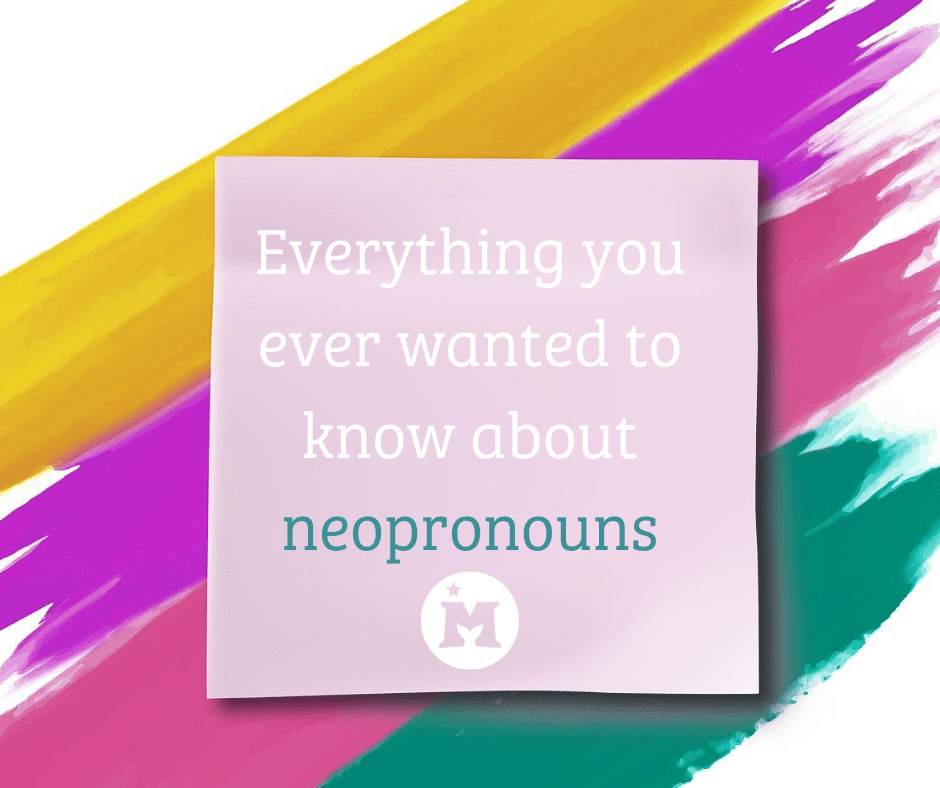
What are neopronouns, how long have they been around for and how do you use them? Rome explains…
Personal pronouns are a way of referring to oneself or another person. Many people wonder why the trans community advocate for the correct pronoun usage, and the answer is simple: pronouns matter.
They are a form of self expression and act as a bridge between the three basic concepts of expression: how one feels, how others view us and how we view ourselves.
One thing to always note is that pronouns do not equal gender identity, and any person of any identity is entitled to use any set of pronouns for their own personal identity.
For example, a non-binary person can use he/him pronouns on their own, while a gender fluid person who experiences some kind of femininity might use he/they pronouns. Pronouns do not correlate to identity and expression does not correlate to pronouns.
I myself identify as non-binary and find I do not feel connected to traditional pronouns as I do not relate to traditional gender. Therefore, I use neopronouns as a form of self expression.
What are neopronouns?
In basic terms, neopronouns are any pronouns other than he, she or they.
Some people use neopronouns to avoid mixing plural they/them pronouns with singular they/them pronouns; some as they feel these types of pronouns help express their personal gender better (for example, those who identify with xenogenders); and some use these simply because they don’t relate to the pronouns society commonly deems appropriate (he/him, she/her or they/them).
The particular reason I use neopronouns is that I identify as a Maverique which means I don’t identify with any masculine or feminine genders but I am not without or neutral of gender.
Defining ourselves on our own terms
I use these to define myself on my own terms as my gender is not easily definable; it is dependent on my interests and personality traits. I also identify with many xenogenders and feel these express myself better than most other pronouns.
Many people, including people within our community, complain about the use of neopronouns but, despite what the name suggests, that fact is they are not a new thing.
The history of neopronouns
One of the first recorded uses of a neopronoun dates back to 1789 where one William H Marshall documented the use of “a” as a pronoun (used previously by John of Trevisa, a 14th century English writer).
One of the oldest noted examples of a neopronoun is “thon”. This is one of the first sets of gender-neutral pronouns created in the English language; American composer Charles Crosby Converse created the use of thon/tho self pronouns as a contraction of “that one” in 1858.
This is one of the oldest neopronouns still in circulation as at the 2019 census, 18 individuals (or 0.2% of all individuals) would happily be referred to as “thon”. So the argument “they’re not part of the English language, so I won’t use them” can be dismantled with this key fact.
Also, language is constantly changing and evolving and is never static. Different phrases and words are coined every day; for example, in the 20th century, “emoji” was not part of the language but today is a commonly used and understood term.
There are distinct categories of neopronoun depending on why they are used, although, ultimately, all pronouns are a form of self expression.
Other kinds of pronouns
Nounself pronouns are a type of pronoun featuring a noun which one relates to. For example, I use bee pronouns, which can be used in this way: “This is bee’s coat”.
@goblincorerome Reply to @3vi3.x.o
♬ original sound – Front: Sans + Rome
Emojiself pronouns are pronouns stemmed from an emoji, for example: “This is ’s coat”.
Some people use no pronouns, instead using a person’s name where a pronoun would be: “This is Tom’s coat”.
It is also important to note that if a person uses multiple pronouns that they expect these pronouns to be alternated in sentences. For example, I myself go by bee/it/they pronouns so when referring to me, one might say: “This is Rome, bee thinks it could have left its coat in the house so they are just going to go look for it, we should join bee.”
So what have we learnt? That any person can use any pronouns, that neopronouns are valid and an established part of the English language, and that language itself is evolving all the time.
Follow Rome on TikTok at @goblincorerome.
